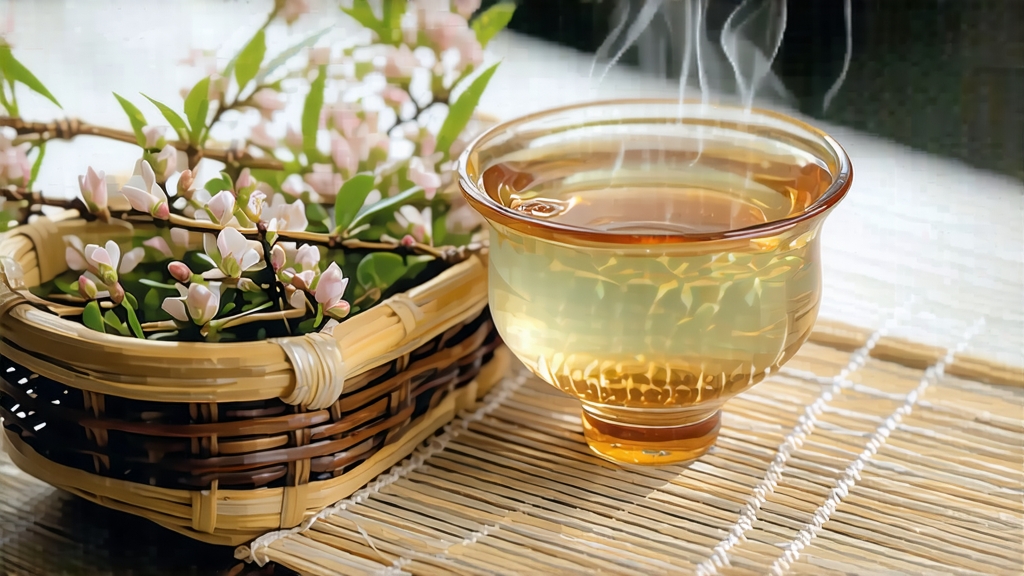
Among the six great families of Chinese tea, white tea is the least theatrical: no tossing in hot woks, no rolling drums, no smoke or charcoal drama. Instead it is a tea that trusts time, air, and the patience of its makers. Within this minimalist lineage, Bai Hao Yin Zhen—translated abroad as White Hair Silver Needle—stands as the purest, most aristocratic expression. Composed solely of unopened leaf buds plucked for only a few spring mornings each year, Silver Needle carries the faint sweetness of mountain mist and the creamy quietude that has seduced emperors, poets, and now a new generation of global tea drinkers seeking both elegance and ease.
Historical whispers place the birth of bud-white tea in the Song dynasty (960-1279), when royal tribute lists mention “white buds from Fuding.” Yet the modern form—buds air-dried without any heat compression—crystallized during the late Qing, when improved road access allowed Fuding and Zhenghe counties to send their delicate harvest north to the treaty ports of Fuzhou and Shanghai. European traders, already enamored with scented congou, mistook the silvery down for mold, then for luxury; by 1891 Silver Needle appeared at the London International Tea Fair, wrapped in silk paper and priced above first-flush Darjeeling. The 1915 Panama-Pacific Expo in San Francisco awarded it a gold medal, sealing its global reputation. During the 1970s domestic demand shifted toward darker, stronger teas, and Silver Needle retreated into regional memory; only since the early 2000s has it re-emerged, propelled by China’s white-tea renaissance and scientific studies praising its antioxidant profile.
True Silver Needle comes from two Fujian counties: Fuding, fronting the East China Sea, and Zhenghe, tucked into the Wuyi foothills. Each terroir stamps the bud: Fuding’s granitic soils and maritime breezes yield needles that brew pale apricot with a light honeysuckle lift, while Zhenghe’s higher, mistier gardens produce sturdier buds tasting of hay and almond paste. A third, lesser-known micro-origin is Jianyang, whose slightly oxidized style reminds some of aged sheng pu-erh. Purists insist on the Fuding Da Bai cultivar—literally “Big White”—whose fat buds can reach 3.5 cm, sheathed in so much trichome that they shimmer like frost on a moonlit roof. Zhenghe instead favors the Zhenghe Da Bai strain, whose buds are shorter but richer in polyphenols, translating into deeper sweetness after a few years of aging.
The crafting of Silver Needle is disarmingly simple on paper, mercilessly difficult in practice. Picking begins when the spring thermometer hovers between 15 °C and 20 °C, ideally under overcast skies that slow moisture loss. Only the “dragon’s tooth” bud—plump, unopened, no stem attached—is snapped between thumb and forefinger; experienced pickers fill a small bamboo basket in an hour, yielding perhaps 250 g of finished tea after days of handling. The buds are then spread on bamboo trays stacked in breezy, shaded corridors where they wither for 36–48 hours. Night temperatures can drop to 10 °C, forcing makers to slide the trays indoors, then back out at dawn, a choreography repeated for two full days. Unlike green tea, which is fixed with high heat to kill enzymes, white tea is allowed to oxidize very slowly through the action of endogenous oxidases. The moment the moisture content falls to 8–10 %, the buds are transferred to charcoal-warm ovens set at a whisper below 40 °C, just enough to stabilize them without caramelizing sugars. The entire process is guided by scent: fresh cucumber at the start, then sweet corn silk, finally a faint note of marzipan that signals readiness.
Because Silver Needle is so lightly processed, every extra minute of withering, every extra degree of heat, writes itself permanently into the cup. Over-withered buds turn ochre and taste of stale hay; under-dried ones sour during storage. The best lots retain a jade-green core visible when you split a bud in half, proof that the maker stopped time at its fragrant apex.
Western brewers often treat white tea like a fragile relic, dousing it with 70 °C water and apologizing for existing. Silver Needle is more forgiving than myth suggests, but it does reward precision. Start with 4